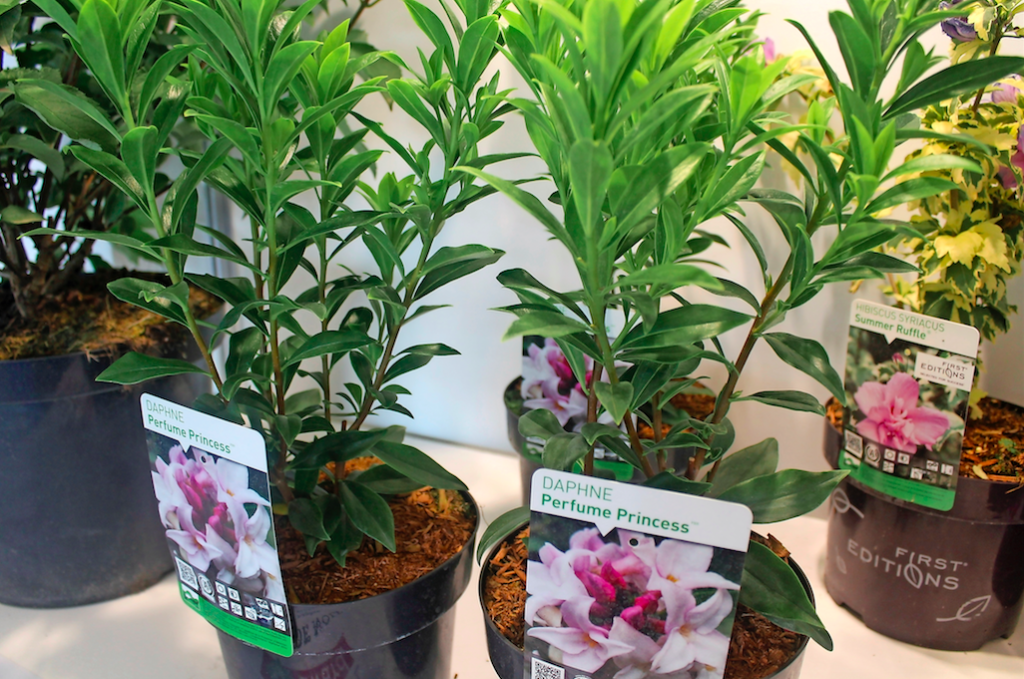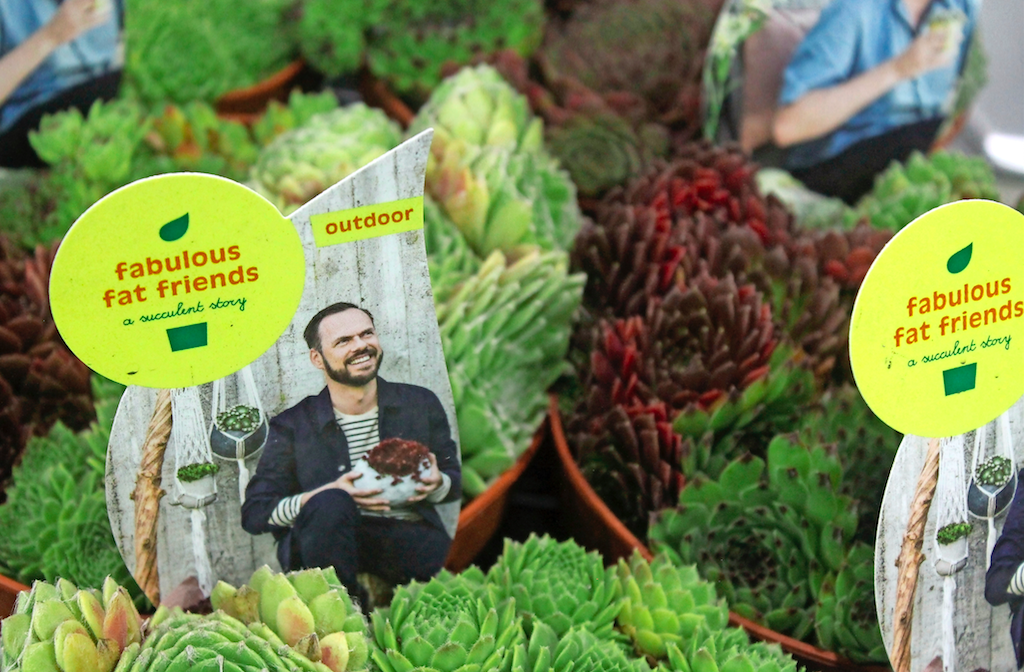Daphne Perfume Princess from Willy de Nolf Boomkwekerij won gold in the Florall Award show, held at the Belgian floriculture fair in Waregem. The fragrant garden plant came ahead of concept Fabulous Fat Friends, as well as garden plant Lagerstroemia Berry Dazzle.
By Arie-Frans Middelburg
The jury might have felt they were comparing apples and oranges, as entries included both new plants and new concepts. The organisation had decided to combine both categories when the concepts category didn’t get more than three entries.

Daphne Perfume Princess from Willy de Nolf Boomkwekerij in Waregem was awarded gold. Siblings Lucas and Laura de Nolf, who manage the 30-ha nursery, were delighted. “It’s great to win this award. Second place would have been disappointing, especially in a show that compares apples and oranges”, said Lucas.
One of Perfume Princess’s great strengths – the name already says it – is its scent. The perennial evergreen shrub flowers in January and February. It has large flowers and it’s hardy up to temperatures of -15°C, described Laura.
Lucas added that the plant was derived from an Australian partner of Willy de Nolf Boomkwekerij. It may originate from New Zealand. It’s cross of Daphne bohlua and Daphne odora. De Nolf sells the plant from early autumn until March/April. “But now that we’ve won the gold award, the plant will probably sell out during autumn”, expects Lucas. He explained that they’ve got around 1,000 plants of Daphne Perfume Princess at the nursery. “I’d like to increase that number.”
Fabulous Fat Friends
Belgicactus was awarded silver for their Fabulous Fat Friends, a new concept for succulents. The nursery from Westerlo launched the concept at Florall. Belgicactus’s succulents have been equipped with new labels. Yellow for outdoor plants and orange for indoor plants.

“We’re hoping to improve the image of the plants with the new labels. Our labels used to have a picture of the plant. But there’s no need for that, as the plant speaks for itself. Our new labels show a story that we want to tell the consumer. We want to inform consumers, for example about how they can use the plant”, explained Jan Gielis.
The labels depict people in an indoor or outdoor environment. “They illustrate a certain experience, consumers can see how they can use that particular plant”, said Gielis. “We grow our plants as if they are our babies, and the consumer can continue this process at home.” Belgicactus uses Twitter, Facebook and Instagram to support the new concept.
Gielis feels that traders’ response to the concept is very positive. “We’re now launching it officially at Florall, but large customers already knew about it.”
Berry Dazzle
Garden plant Lagerstroemia Berry Dazzle of Devriese-Luyssen from Wingene was awarded third place. This Lagerstroemia novelty doesn’t grow as tall as other cultivars. It stays nice and compact when potted. “Traders like that. It means they can add a shelf to the trolley”, said Ingrid Luyssen of DeVriese-Luyssen.
“It flowers for quite a long time and has a fascinating reddish purple colour”, she added. The plant comes into bloom in July and keeps flowering for a long time. This year, the early-flowering perennial flowered twice, just like other Lagerstroemias, thanks to the hot weather.

The heat didn’t cause any problems for Lagerstroemia though, assured Luyssen. 30°C isn’t a problem. “They require a sunny place. And once they’re rooted, you no longer need to water them.”
Devriese-Luyssen started selling the Berry Dazzle last year. According to Luyssen, the plant is already in great demand. The company isn’t planning a huge production increase, because they want to focus on selling Lagerstroemia throughout the summer.
The nursery’s main crop is laurel, and they’ve also been growing Lagerstroemia for ten years now. Most of their varieties are from the United States. Those cultivars are more suitable for the northern countries than the ones that are common in southern Europe, explained Luyssen.









